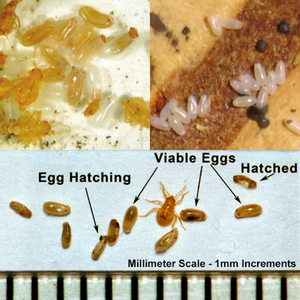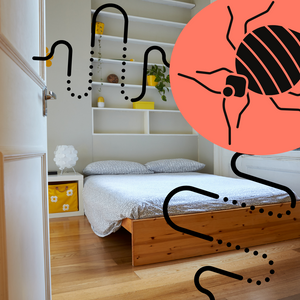Can You Drown Bed Bugs?

Bed bugs can hide in your furniture, appliances, pillows, mattress, linens, and clothes. If you see fecal spots, exoskeletons, or blood smears on your bed, it is a sign that these critters are in your home.
Can bed bugs drown in water? These bugs are sensitive to heat, so you should drown them in hot water. Cold temperatures can also kill these critters, so you can freeze them.
How Long Can Bed Bugs Survive in Water?
These pests will drown when placed in water because they cannot swim. However, these critters are light enough that they do not sink immediately.
Bed bug eggs can survive even when they are submerged for 24 hours. The more resilient eggs can survive for a long period when the temperature is cool. As such, washing launderable items using cold water cannot kill all of them.
A bed bug’s survival depends on the temperature of the water they are in. They cannot survive in hot waters. Bed bugs die when their body temperature reaches 115⁰ F. The same applies to adult bed bugs and their eggs.
If you want to kill these critters using your washing machine, you should wash your bed sheets and clothes on the hottest setting. Put your garments in the dryer and run them through a hot setting for 30 minutes.
You can vacuum and steam clean carpets, mattresses, and other items that you cannot put in the washing machine. Newly cleaned items should be stored in sealed bags to prevent the bugs and their eggs from infesting your garments.
Remember that even if you do kill some of these critters in the water, this will not get rid of those hiding in the other corners of your home.

Tips to Drown Bed Bugs in Your Room
You can drown bedbugs in your room without bringing them in your washer. Just follow the tips below:
- You can drown them using a bed bug interceptor. It can be placed around the feet of the bed. They will climb inside the interceptor, but they will not be able to climb out because the inside is too slippery for them.
- Fill the interceptor with enough water. The critters that fall inside the interceptor will drown and die.
- If you do not want to squash them, you can use water to kill them. Fill a cup halfway with water then dump the bugs inside. Wash the cup after using it.
Try these steps when you want to get rid of these critters in your room without bringing infested items to the washing machine.
Is Drowning Bed Bugs Effective?
Drowning bed bugs are ineffective because they will not drown easily. These pests weigh almost nothing, so they cannot break the surface tension of water. They also have a waxy outer coating that repels water. If these critters land correctly, they will be able to get out of the water safely. Moreover, the eggs that you missed will breed and continue to lay more eggs.
A laundry detergent or dish soap is enough to break the surface tension and submerge the bugs in the water. You can also use a residual treatment method such as a pesticide that you only need to spray once but has lasting effects. Some pesticides can continue killing bed bugs for weeks after being sprayed once. You do not need to do anything during this period.
Residual methods can prevent new infestations. You can also use a method that kills bed bugs right away such as heat treatment. High temperatures can kill bed bugs and their eggs.
Although this method is not residual, it can get rid of bed bugs immediately if done correctly. Call a pest controller to heat your home to 140⁰ F or more. You can also use a handheld spray to get rid of them.
How to Kill Bed Bugs in the Washing Machine
Bed bugs cannot survive a washing cycle because of three factors – the water, the temperature, and the detergent. The water alone is fatal to them. The detergent is toxic when ingested in large amounts.
Put launderable items in a plastic bag and dump them directly into the washer to prevent spreading these critters around your home. Wash the items at 140⁰ F or 60⁰ C for 30 minutes to kill bed bugs in all life stages. Washing at 100⁰ F or 40⁰ C only kills the nymphs and adults and 25% of eggs, so you should wash and dry your garments at the hottest temperatures.







